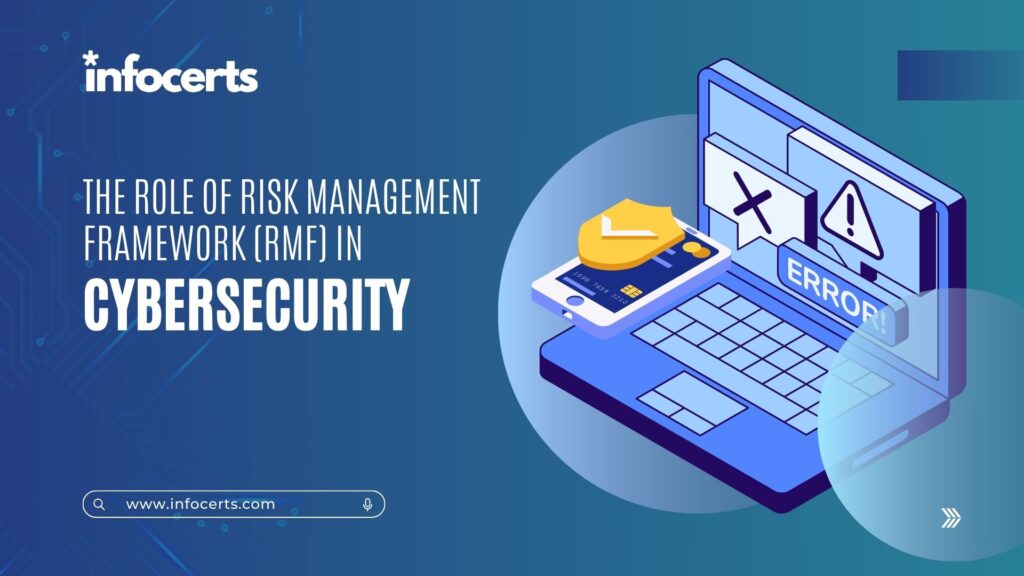The Risk Management Framework in Cybersecurity (RMF) is essential for securing digital infrastructures and ensuring compliance with regulations like the General Data Protection Regulation (GDPR). In today’s digital world, where data breaches and cyberattacks are frequent, organizations must adopt RMF to build a robust cybersecurity strategy that mitigates risks effectively.
1. Understanding Risk in RMF
At the heart of the Risk Management Framework in Cybersecurity is the identification and mitigation of risks. In the context of cybersecurity, risk refers to the possibility of unauthorized access, loss, or destruction of data. RMF provides a structured approach to:
- Identify vulnerabilities in systems.
- Assess the potential impact of risks.
- Implement measures to mitigate these risks.
Table 1: Risk Elements in RMF
| Step | Description |
|---|---|
| Risk Identification | Understanding threats that may lead to data breaches |
| Risk Assessment | Evaluating the severity and impact of identified risks |
| Risk Mitigation | Implementing controls to manage or reduce risks |
| Monitoring & Review | Continuously monitoring risk management effectiveness |
For organizations subject to GDPR and cybersecurity requirements, managing risk is not just about compliance; it’s about protecting sensitive personal data from breaches and ensuring continuous data security.
2. How RMF Supports Cybersecurity Strategy
By aligning with GDPR and other regulations, RMF plays a crucial role in shaping an organization’s cybersecurity strategy. Here’s how:
- Proactive Risk Management: RMF emphasizes the proactive identification of risks, ensuring that organizations are not caught off guard by emerging threats.
- Compliance with Regulations: Implementing RMF helps meet GDPR’s stringent requirements on data protection and breach notifications.
- Continuous Monitoring: RMF encourages continuous assessment of controls, which aligns with GDPR’s demand for ongoing compliance and adaptability in a changing threat landscape.
To learn more about how RMF enhances cybersecurity compliance, particularly under GDPR, check out our GDPR courses.
Contact us today at infocerts | Phone: +91 70455 40400 to enroll in our GDPR training courses designed specifically for IT professionals looking to strengthen their data risk management skills.
3. Integrating RMF with NIST Guidelines
One of the most powerful features of RMF is its adaptability. Integrating RMF with NIST guidelines offers organizations a robust framework to safeguard personal data, which is critical under GDPR compliance.
The NIST Cybersecurity Framework complements RMF by providing detailed guidelines on:
- Encryption: Protecting sensitive data through encryption, which is a key requirement under GDPR and data security regulations.
- Access Control: Ensuring only authorized personnel have access to data, reducing the risk of internal breaches.
- Incident Response: Implementing measures for timely detection and response to data breaches, which aligns with GDPR’s breach notification requirements.
This integration helps organizations develop a comprehensive approach to managing cyber risks, keeping them secure and compliant.
4. Mitigating Cyber Risks through RMF
RMF is a key tool in reducing and managing data risks. Organizations face growing threats, from phishing to ransomware, and need to be prepared. RMF focuses on:
- Regular Assessments: Continually evaluating risks and implementing necessary measures.
- Data Encryption: Ensuring all personal data is encrypted as per GDPR standards.
- Incident Management: Quickly identifying and addressing potential breaches to minimize damage.
Incorporating these steps ensures an organization’s cybersecurity posture is strong and resilient, with full GDPR compliance.
Table 2: Key Cyber Risk Mitigation Steps in RMF
| Risk Mitigation Step | RMF Focus |
|---|---|
| Encryption of Data | Ensures confidentiality of personal data |
| Incident Response Plan | Meets GDPR’s breach notification requirement |
| Monitoring & Auditing | Tracks effectiveness of risk controls |
For more information on GDPR and data risk management, visit our GDPR compliance courses.
Conclusion
Risk management plays a critical role in cybersecurity, especially when aligned with GDPR standards. By adopting the Risk Management Framework in Cybersecurity, organizations can mitigate cyber risks effectively, stay compliant with regulations, and secure their data against potential breaches.

